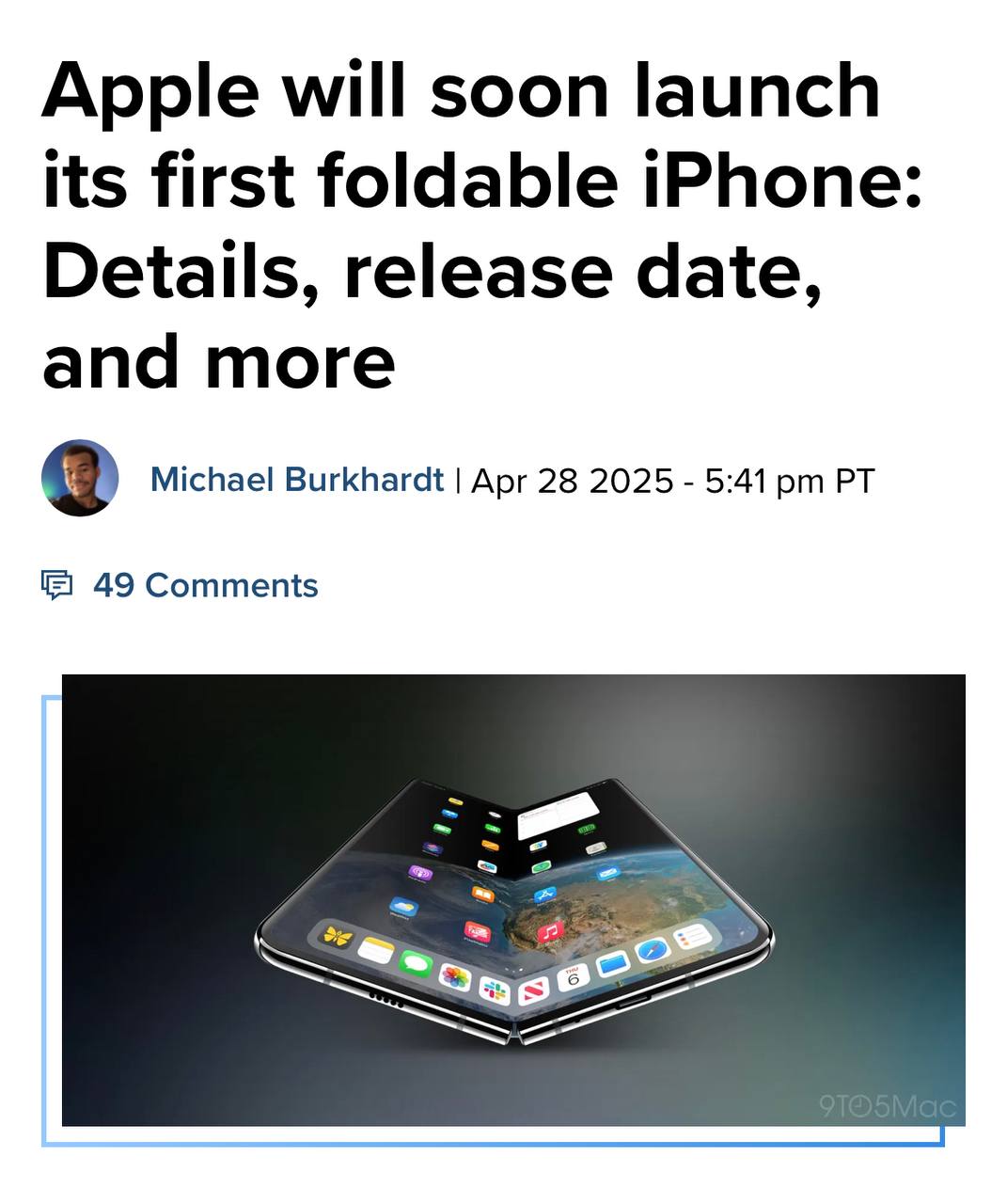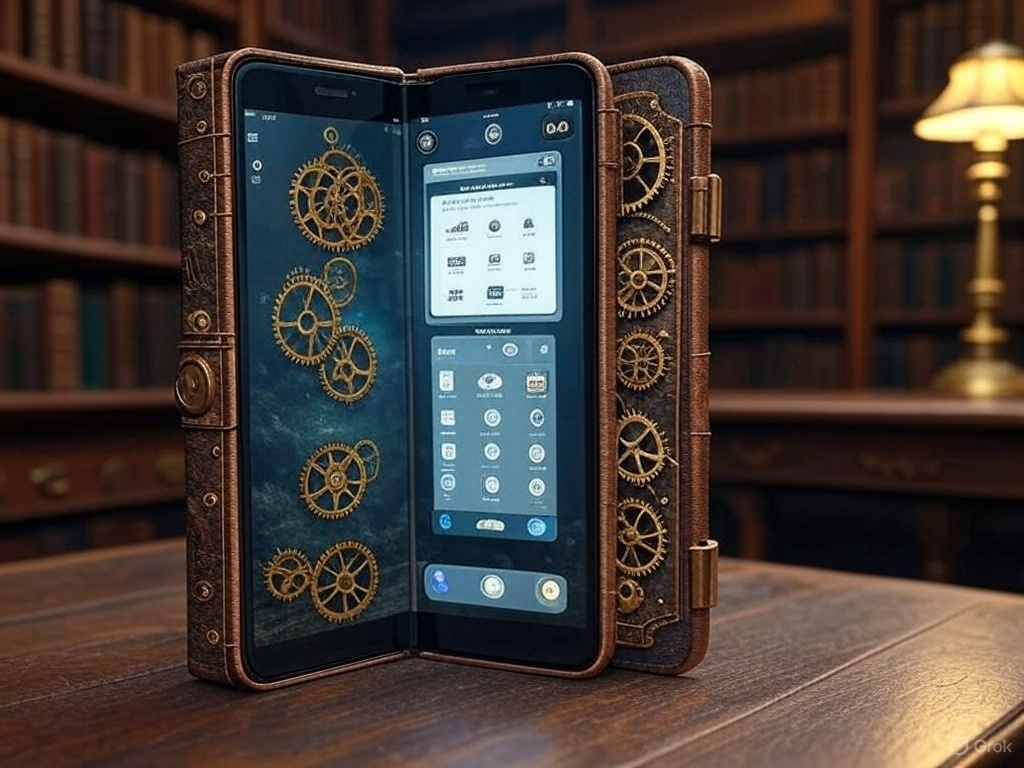Apple is reportedly stepping into the foldable smartphone arena with its much-anticipated iPhone 18 Fold, slated to launch alongside the iPhone 18 lineup in Fall 2026, according to industry insiders. The tech giant, known for its meticulous approach to innovation, appears to be taking a page out of Samsung’s playbook, echoing designs that first debuted with the Samsung Galaxy Z Fold series six years ago.
 The iPhone 18 Fold is said to feature a book-style design, similar to the Galaxy Z Fold, with a 5.5-inch external display for quick access and a larger 7.8-inch internal screen when unfolded.
The iPhone 18 Fold is said to feature a book-style design, similar to the Galaxy Z Fold, with a 5.5-inch external display for quick access and a larger 7.8-inch internal screen when unfolded.
The device’s aspect ratio of 4:3 aligns it closely with the iPad mini, suggesting Apple is aiming for a hybrid experience that blends smartphone portability with tablet-like functionality.
This move could position the iPhone 18 Fold as a productivity powerhouse, catering to users who crave a larger screen for multitasking without carrying an additional device.
However, the premium design comes with a steep price tag. Sources indicate the iPhone 18 Fold will retail between $2,100 and $3,000, placing it firmly in the ultra-luxury segment of the smartphone market.
This aligns with Apple’s strategy of targeting high-end consumers, but it also raises questions about accessibility, especially when compared to Samsung’s foldable offerings, which have seen price reductions over the years—the Galaxy Z Fold 6 launched at $1,899 in 2024.
 Also read:
Also read:
- How to Calculate Your Body Temperature with an iPhone Using Smart Thermometer
- Without Connecting to A Computer How to Reset and Wipe A Locked iPhone
- Protect your iPhone with the Best iPhone Cases
 Critics on X have been quick to point out the similarities between Apple’s rumored design and Samsung’s foldables, with some accusing CEO Tim Cook of “copying” a concept Samsung introduced back in 2019 with the original Galaxy Fold. “Apple is just recycling Samsung’s homework from six years ago,” one user posted, reflecting a sentiment shared by others who feel Apple is late to the foldable game.
Critics on X have been quick to point out the similarities between Apple’s rumored design and Samsung’s foldables, with some accusing CEO Tim Cook of “copying” a concept Samsung introduced back in 2019 with the original Galaxy Fold. “Apple is just recycling Samsung’s homework from six years ago,” one user posted, reflecting a sentiment shared by others who feel Apple is late to the foldable game.
Samsung, meanwhile, has had years to refine its foldable technology, addressing early issues like screen durability and hinge reliability, challenges Apple will need to overcome to justify its premium pricing.
 Despite the criticism, Apple’s entry into the foldable market could shake things up. The company has a history of entering established markets late—think smartwatches or wireless earbuds — and redefining them with polished design and ecosystem integration.
Despite the criticism, Apple’s entry into the foldable market could shake things up. The company has a history of entering established markets late—think smartwatches or wireless earbuds — and redefining them with polished design and ecosystem integration.
If the iPhone 18 Fold delivers seamless continuity with iPadOS apps, a durable crease-free display, and Apple’s signature build quality, it might just win over skeptics.
For now, all eyes are on Fall 2026 to see if Apple can fold its way into a new era of smartphones—or if it’s simply playing catch-up with Samsung.






